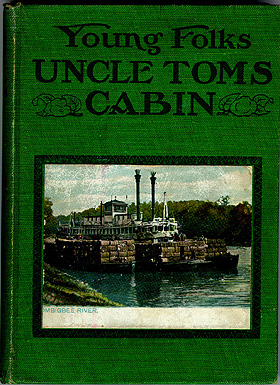The copy of this in the Barrett Collection was published by Caldwell as part of its "Six to Sixteen Series" in 1910. According to the volume's copyright page, however, it was apparently originally published in 1901 by the Jamieson-Higgins Company. It is an extraordinary re-vision. The story it tells is mostly Stowe's (except for the episode in Chapter 8 where Uncle Tom tells Eva a Brer Rabbit story, which comes of course from Joel Chandler Harris and Uncle Remus), but when Boylan rewrites the ending to have George Shelby get to Legree's in time to save Tom's life, and then adds a new last chapter set on the Shelby plantation after the Civil War, she is telling the story of how American culture "adapted" Stowe's anti-slavery protest novel to the politics of Jim Crow. In the last chapter, although slavery has been abolished, the "old plantation" has been "reconstructed" in the most reactionary sense: even Topsy continues to dance. At the end, Tom waves goodnight from his cabin to Mrs. Shelby and Miss Ophelia, who are happy to see blacks in essentially the same place they occupied as slaves.
Young Folks Uncle Tom's Cabin
Adapted for Children by Grace Duffie Boylan;
With Original Illustrations by Ike Morgan
(New York: H. M. Caldwell Company, 1910)

